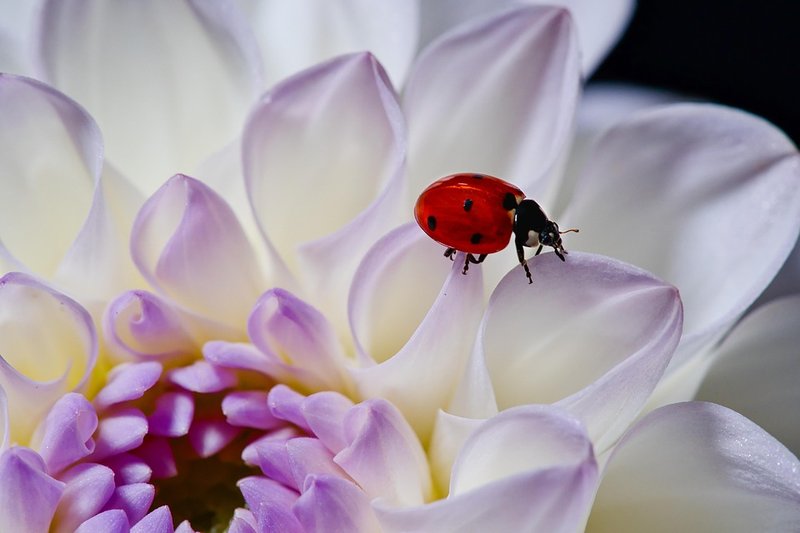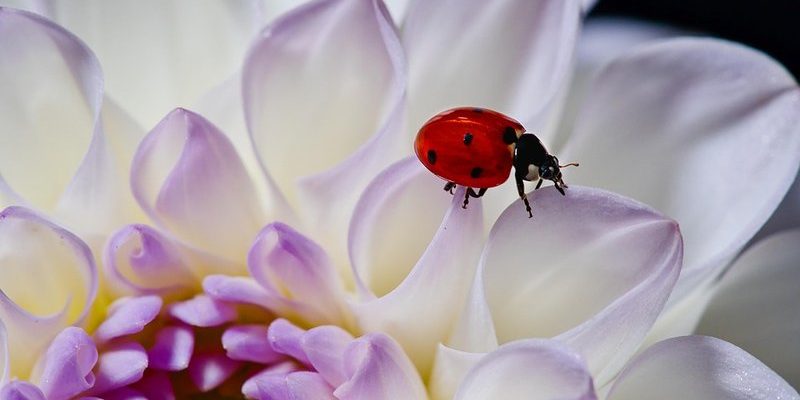
If you’ve ever seen a ladybug perched on a flower, you might be wondering—what exactly are they doing? In this article, we’ll explore how ladybugs contribute to pollination, pest control, and even provide a little insight into their fascinating life cycle. Spoiler alert: They’re quite the multitaskers!
What is Pollination and Why is it Important?
Pollination is a crucial process in nature that allows plants to reproduce. When a flower gets pollen from another flower, it can create seeds and, eventually, new plants. This process is vital for food production, as many of the fruits and vegetables we enjoy rely on it.
You might not think of ladybugs in the same breath as bees or butterflies when it comes to pollinators, but they do contribute to the process. While they primarily focus on consuming aphids and other pesky insects, they also help transfer pollen as they move from flower to flower. Think of them as helpful sidekicks in the pollination game.
Without pollination, many plants wouldn’t be able to produce fruits or seeds, leading to reduced biodiversity and food scarcity. So, every time a ladybug crawls around your garden, it’s doing its part in this essential cycle.
Ladybugs as Pest Controllers
Here’s the thing: while ladybugs are small, their appetite for pests is mighty. One of their most significant roles in the ecosystem is acting as natural pest control. They primarily feast on aphids, which are tiny sap-sucking insects that can wreak havoc on plants.
A single ladybug can consume anywhere from 50 to 100 aphids in a day. That’s like you devouring a whole pizza in one sitting! By keeping aphid populations in check, ladybugs help ensure that your garden remains healthy and vibrant.
What’s even more fascinating is that ladybugs don’t just stop at aphids. They also munch on other pests like spider mites and mealybugs. By maintaining a balance in the garden, ladybugs play a vital role in organic gardening and sustainable agriculture, making them true heroes in the plant world.
Life Cycle of a Ladybug
Understanding the life cycle of a ladybug can give you insight into why they’re so beneficial. Ladybugs go through four main stages: egg, larva, pupae, and adult.
1. Egg Stage: Female ladybugs lay tiny yellow eggs, usually on the underside of leaves where aphids are plentiful.
2. Larva Stage: Once the eggs hatch, the larvae emerge. They look quite different from adult ladybugs—more like little alligators! Over the next few weeks, they grow and continue to eat pests.
3. Pupae Stage: After the larval stage, they form a pupae. This is where the magic happens, as they begin to transform into adult ladybugs.
4. Adult Stage: Finally, the adult ladybug emerges. With its attractive bright colors and spots, it’s ready to start the cycle all over again.
Each stage of a ladybug’s life is crucial to their role in gardens and farmland. By ensuring these stages are protected, we can maintain healthy ladybug populations and, in turn, support our plants.
Ladybugs and Biodiversity
Biodiversity is all about the variety of life in a particular habitat. Ladybugs play a significant role in maintaining this diversity. When they control pest populations, they foster a healthier environment for various plants and other creatures.
You might be surprised to know that there are over 5,000 species of ladybugs worldwide! Each species has unique behaviors and habitats, contributing to the ecosystems they inhabit. By encouraging ladybugs in your garden, you help increase the overall health and balance of your local ecosystem.
Furthermore, as ladybugs dine on harmful pests, they indirectly support the growth of a wide range of plants, which in turn offers food and shelter to many other organisms. It’s like a chain reaction—healthy ladybugs lead to healthy plants, and healthy plants lead to a thriving community of wildlife.
Creating a Ladybug-Friendly Garden
If you want to attract ladybugs to your garden, you’ll need to create a welcoming environment for them. Here are some tips to help you do just that:
- Plant Diverse Vegetation: Choose a mix of plants that bloom at different times. Ladybugs enjoy nectar-rich flowers like daisies, marigolds, and yarrow.
- Avoid Pesticides: Many pesticides can harm ladybugs. Opt for organic approaches to pest control that won’t disrupt these beneficial insects.
- Provide Shelter: Leave small piles of leaves or stones in your garden for ladybugs to hide and lay eggs.
- Water Source: Ensure there’s a small source of water, like a shallow dish, for ladybugs to drink.
By making your garden ladybug-friendly, you’re not just inviting one delightful insect; you’re creating a ecosystem that supports various life forms. Plus, you’ll likely enjoy the beauty of these charming beetles as they flit about!
Ladybugs might seem like just a pleasant sight on a summer day, but they play vital roles in pollination, pest control, and maintaining biodiversity. By understanding their contributions, we can appreciate how these little creatures help us—and our plants—thrive.
So next time you see a ladybug, take a moment to appreciate its hard work. After all, they’re not just cute; they’re nature’s little helpers, ensuring our gardens are beautiful and balanced. By supporting ladybug populations, you’re contributing to a healthier ecosystem, one tiny beetle at a time.

